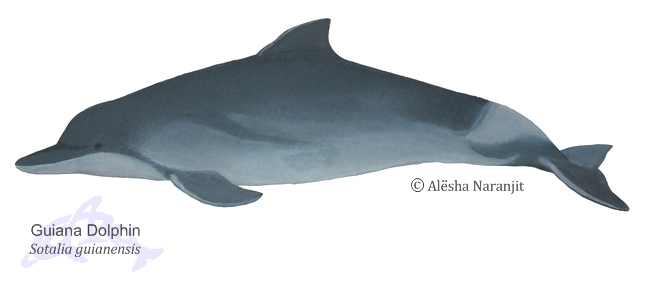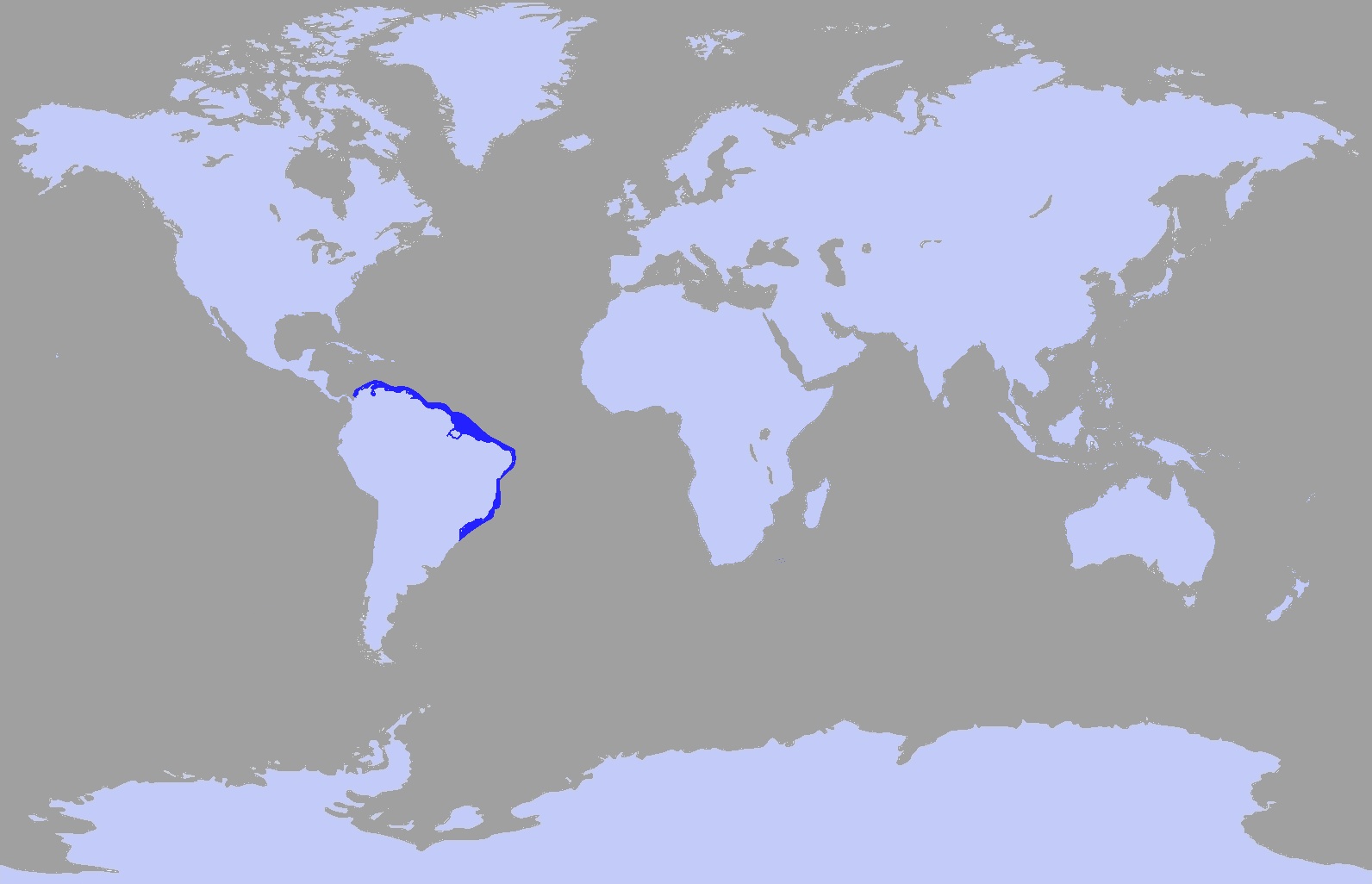Guiana Dolphin
Sotalia guianensis
Sotalia guianensis

Classification Other Names: Sotalia; previously classified as the marine form of the Tucuxi Dolphin (Sotalia fluviatilits), and was known as the Costero Dolphin however it is now designated as a separate species. Suborder: Odontoceti Family: Delphinidae | Description
The Guiana Dolphin is similar to the bottlenose dolphin but smaller and chunkier with a medium-length, narrow beak and a low, triangular dorsal fin with a long base. It is generally pale grey, blue-grey or brownish-grey with a paler underside often tinged pink with broad, sometimes ill-defined eye-flipper stripes. This dolphin has a pale blaze of colour aross the tailstock. As adults, females are almost always larger than males. They are extremly social and often perform acrobatics but are shy and not known to bow-ride. Some have been shown to have long-term residency in one area.
|
Guiana Dolphin Ecology Range: Nearshore waters around Central and South America from 15°N (Panama) to 27°S (South Brazil). Usual Habitat: Shallow, sheltered bays and estuaries Usual group size: Often in groups of up to 50 individuals. Main Diet: Schooling and bottom-dwelling fish, cephalopods (squid and octopus) and shrimp. Local population: Unknown | Global range of the Guiana Dolphin  Dark blue areas indicate where Guiana Dolphins are likely to be found |
Conservation Information
Protection and Conservation Status
IUCN Conservation Status: Guiana Dolphins are listed as "Data Deficient" on the IUCN red list. SPAW Protocol: Guiana Dolphins are cetaceans, which are listed under Annex II of the SPAW protocol. As such they require total protection under article 11 of this protocol which prohibits the "taking, possession, killing and commercial trade of the species, their parts or products". The SPAW protocol was created to help with the implementation and promotion of the Ramsar Convention and the Convention on Biological Diversity. The Annexes of the SPAW protocol can be found here. Local Laws: Cetaceans are protected under the Conservation of Wildlife Act of Trinidad and Tobago which offers protection to all species not listed under the second or third schedules of this act. |
Reports of Guiana Dolphins in Trinidad and Tobago
This is currently being researched and written. It will appear here shortly.
This is currently being researched and written. It will appear here shortly.
References
The above information was obtained from the following sources:
- A Princeton Field Guide: Whales Dolphins and Other Marine Mammals of the World by Hadoram Shirihai and Brett Jarrett (2006)
- Smithsonian Handbooks: Whales Dolphins and Porpoises by Mark Carwardine and illustrated by Martin Camm (2002)
- The Whale and Dolphin Conservation Society's Species Guide at http://www2.wdcs.org/species/index.php
- The IUCN Redlist at http://www.iucnredlist.org
- The SPAW protocol Annexes with links available at http://www.car-spaw-rac.org/?Annexes-of-the-SPAW-Protocol,83
Acknowledgements
We would like to thank the following people for the use of the art work and photographs:
- Alësha Naranjit (Illustration of Guiana Dolphin)